Leakage current in electrical networks, how to check and find leakage current
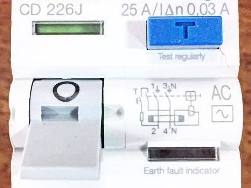 Leakage current as a physical phenomenon You have probably heard the expression "leakage current" or "leakage current to earth", but can anyone explain what it is? What causes a leakage current, why is it dangerous, how to eliminate it? We will try to get an answer to these questions.
Leakage current as a physical phenomenon You have probably heard the expression "leakage current" or "leakage current to earth", but can anyone explain what it is? What causes a leakage current, why is it dangerous, how to eliminate it? We will try to get an answer to these questions.
Firstly, for a leak to occur, a current needs a closed electrical circuit, like any conduction current. And practically any conductive object can become a load here: a person’s body, bathtub, pipe, part of the electrical installation case, etc. And if the leakage current turns out to be excessively high, then there may be a danger to human health. That is why it is necessary to have an idea of this phenomenon. Schematically, the figure shows the path that the leakage current has laid for itself through the human body. Why did the current go through the body in this example? Because the resistance between the housing and the live parts of the installation ...
How to check the differential machine and RCD
 Residual current circuit breakers residual current circuit breakers are designed to disconnect power when a leakage current occurs. This is often called differential protection. However, any switching device must be checked both for operation as such and for compliance with the rated parameters.
Residual current circuit breakers residual current circuit breakers are designed to disconnect power when a leakage current occurs. This is often called differential protection. However, any switching device must be checked both for operation as such and for compliance with the rated parameters.
Does the residual current device as they are called "RCDs" operate when the current difference between the poles is different. In simple terms, the principle of operation of these devices is to compare the current through phase and zero. If the current through the phase is greater than zero, it means that part of it flowed in a different way, for example, insulation of the conductors was damaged or the heating element broke and a current of a certain magnitude "flows" to the ground. If the body of the appliance is grounded - this situation is not too scary and even with good grounding is not even dangerous, but if you have a two-wire power supply network without grounding,then on hit potential ...
How is difavtomat arranged and what is it used for
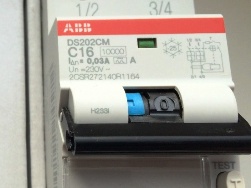 A differential automatic machine or differential circuit breaker is a device that combines two protective switching devices - an RCD and a circuit breaker. They are used in 220/380 Volt switchboards in everyday life and in production. In this article we will consider what a difavtomat is, how it is structured and where it is used.
A differential automatic machine or differential circuit breaker is a device that combines two protective switching devices - an RCD and a circuit breaker. They are used in 220/380 Volt switchboards in everyday life and in production. In this article we will consider what a difavtomat is, how it is structured and where it is used.
Difavtomats are used to protect wiring from overload, overcurrents, short circuit, as well as to protect a person from electric shock during leaks. Leaks can occur as a result of a breakdown into the body of electric heaters (heating elements), for example, in boilers - water tanks, electric ovens, stoves, washing machines or dishwashers, as well as aging or damage to insulation. All these problems can be localized by installing a device that compares currents between phase and zero, and if more flows through the phase ...
Marking of circuit breakers: meaning and interpretation
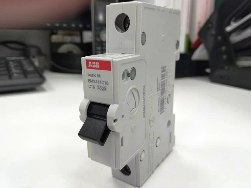 Everyone knows the circuit breakers. In the people they are called simply "automatic". And everyone in the house or apartment has at least one, or even two such devices. Automatic machines protect wiring from emergency situations and prevent their development. Manufacturers print a whole series of text on their case, but not everyone understands what it says. This article will help you decipher the marking of circuit breakers.
Everyone knows the circuit breakers. In the people they are called simply "automatic". And everyone in the house or apartment has at least one, or even two such devices. Automatic machines protect wiring from emergency situations and prevent their development. Manufacturers print a whole series of text on their case, but not everyone understands what it says. This article will help you decipher the marking of circuit breakers.
In terms of the appearance of the majority, it is impossible to determine what current it is rated for, the only thing you can guess from its size is it passes a large or small current and how many phases (poles) it is designed for. How to determine the characteristics of the machine? You just need to read the markings.Marking a series of machines allows you to find complete documentation with all the technical characteristics and features of the model. It is indicated either under the logo of the manufacturer ...
How to distinguish electronic RCD and electromechanical: features of the device and application
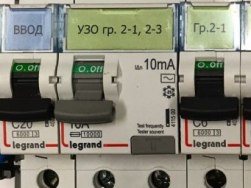 RCD - a residual current device or differential current switch is installed to protect a person from electric shock. However, not everyone knows that there are two types of RCDs: electronic and electromechanical. In this article we will talk about what are the differences between RCDs of different types and how to determine the type when buying.
RCD - a residual current device or differential current switch is installed to protect a person from electric shock. However, not everyone knows that there are two types of RCDs: electronic and electromechanical. In this article we will talk about what are the differences between RCDs of different types and how to determine the type when buying.
In general terms, the principle of operation of the RCD is as follows: when the current through the phase wire differs from the current through the neutral wire, a relay is activated that disconnects the load. The current is detected using a differential transformer and a polarized relay. A situation where currents of different sizes flow through a phase and neutral wire can occur if a device has a leak on the housing. A leak to the housing occurs if the insulation of one of the conductors of the electrical appliance is damaged and touches the housing ...
How the time-current characteristics of circuit breakers and fuses work
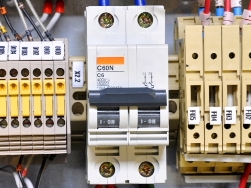 Electric current has one distinguishing feature: it is able to flow only in a closed loop. If this chain is broken, then its action immediately ceases. This property is embodied in the work of maximum current protection, based on the use of fuses and circuit breakers.
Electric current has one distinguishing feature: it is able to flow only in a closed loop. If this chain is broken, then its action immediately ceases. This property is embodied in the work of maximum current protection, based on the use of fuses and circuit breakers.
They are selected in such a way that they can withstand the nominal value of the current flowing through them for a long time. This ensures the reliability of power supply to consumers. At the same time, fuses and circuit breakers have protective functions: during emergency conditions in a controlled circuit, they break the dangerous current passing through them. In this case, the complex takes into account two factors: the magnitude of the flowing load current, the duration of its impact. The fuse fuse blows out from the heat created by the current passing through it ...
Which RCD to choose - criteria for the right choice
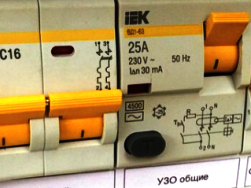 RCD is a residual current device. Such devices are designed to shut off the power supply in case of current leakage. The latter can happen if you touch a bare wire, if a child accidentally puts something metallic into the socket, as well as as a result of damage to the insulation of the wires. In order to protect yourself and your home, you must correctly select the protective disconnect device. To begin with, we will figure out what types of protective devices are.
RCD is a residual current device. Such devices are designed to shut off the power supply in case of current leakage. The latter can happen if you touch a bare wire, if a child accidentally puts something metallic into the socket, as well as as a result of damage to the insulation of the wires. In order to protect yourself and your home, you must correctly select the protective disconnect device. To begin with, we will figure out what types of protective devices are.
All RCDs are divided into two types according to the principle of operation: electromechanical and electronic. Electromechanical devices are independent of voltage, their source is a differential current (leakage current), which is formed in the fault line. Electronic, on the contrary, depends on the mains voltage, and in order to disconnect a damaged circuit, the device needs an external source. There are three types of protective apparatus: AC, A, B ...
Which protection devices are better: fuses or circuit breakers?
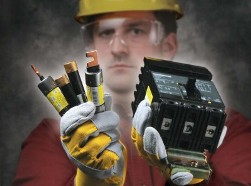 When operating a domestic and industrial electrical network, there are always risks of electric injuries or equipment damage. They can occur at any time when critical conditions appear. To reduce such consequences allow protective devices. Their use significantly increases the safety of using electricity. Electric circuit protection works on the basis of: fuse, mechanical circuit breaker.
When operating a domestic and industrial electrical network, there are always risks of electric injuries or equipment damage. They can occur at any time when critical conditions appear. To reduce such consequences allow protective devices. Their use significantly increases the safety of using electricity. Electric circuit protection works on the basis of: fuse, mechanical circuit breaker.
Two ingenious scientists, Joule and Lenz, simultaneously established the laws of mutual relations between the magnitude of the passing current in the conductor and the release of heat from it, revealing the dependences on the circuit resistance and the length of time. Their findings allowed us to create the simplest protective structures based on the thermal effect of current on the metal of the wire. Electrical fuses use ...
